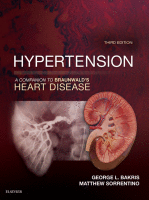Physical Address
304 North Cardinal St.
Dorchester Center, MA 02124

Hypertension and ischemic heart disease (IHD) are strongly related and the two co-occur frequently, particularly in aging populations. Both conditions cause or contribute to substantial disability and mortality worldwide and both are responsible for substantial health care use and economic…

Primary, formerly essential, hypertension accounts for about 90% of cases of hypertension. Reduction in systolic and diastolic blood pressure in patients with primary hypertension reduces the risk for cardiovascular (CV) events including myocardial infarction, stroke, and congestive heart failure as…

High blood pressure (BP) is the leading risk factor for global morbidity and mortality. Clinical trials in hypertension have largely focused on the efficacy of oral medications to lower BP and reduce cardiovascular events. However, a variety of other nonpharmacologic…

Hypertension remains an almost ubiquitous entity as a chronic disease around the world today. Its relevance lies in the fact that it is one of the most common risk factors responsible for cardiovascular morbidity and mortality. It is estimated that…

Heart disease is the leading cause of death in the United States and hypertension is an important risk factor for cardiovascular (CV) disease. Affecting up to 30% of the population, when hypertension is well controlled it reduces the risk of…

Mechanism of Action Central sympatholytics (e.g., methyldopa, guanabenz, guanfacine, clonidine, moxonidine, and rilmenidine) have a variety of antihypertensive actions that result in increased sodium excretion and decreases in the cardiac output, heart rate, total peripheral resistance, and renin release. Central…

Calcium channel blockers (CCB) have extensive therapeutic applications. Three CCB were listed in the forty most commonly used prescriptions and over-the-counter drugs in the Slone Survey of Recent Medication Use by the adult ambulatory population of the United States in…

The renin angiotensin aldosterone (RAA) system plays a central role in regulating cardiovascular and renal functions, and is a key component of the blood pressure homeostasis system in humans. Renal hypoperfusion triggers the production and release of renin from the…

The Sympathetic Nervous System in Hypertension The notion that sympathetic fibers are found on the vascular wall and when stimulated cause vasoconstriction was proposed in 1840. The activity of these fibers is one of the components that control peripheral vascular…

Diuretics are one of the most important classes of drugs used in hypertension. In simplistic terms, the basic premise for their use is that they reduce extracellular fluid volume and increase sodium excretion, which leads to reductions in blood pressure.…